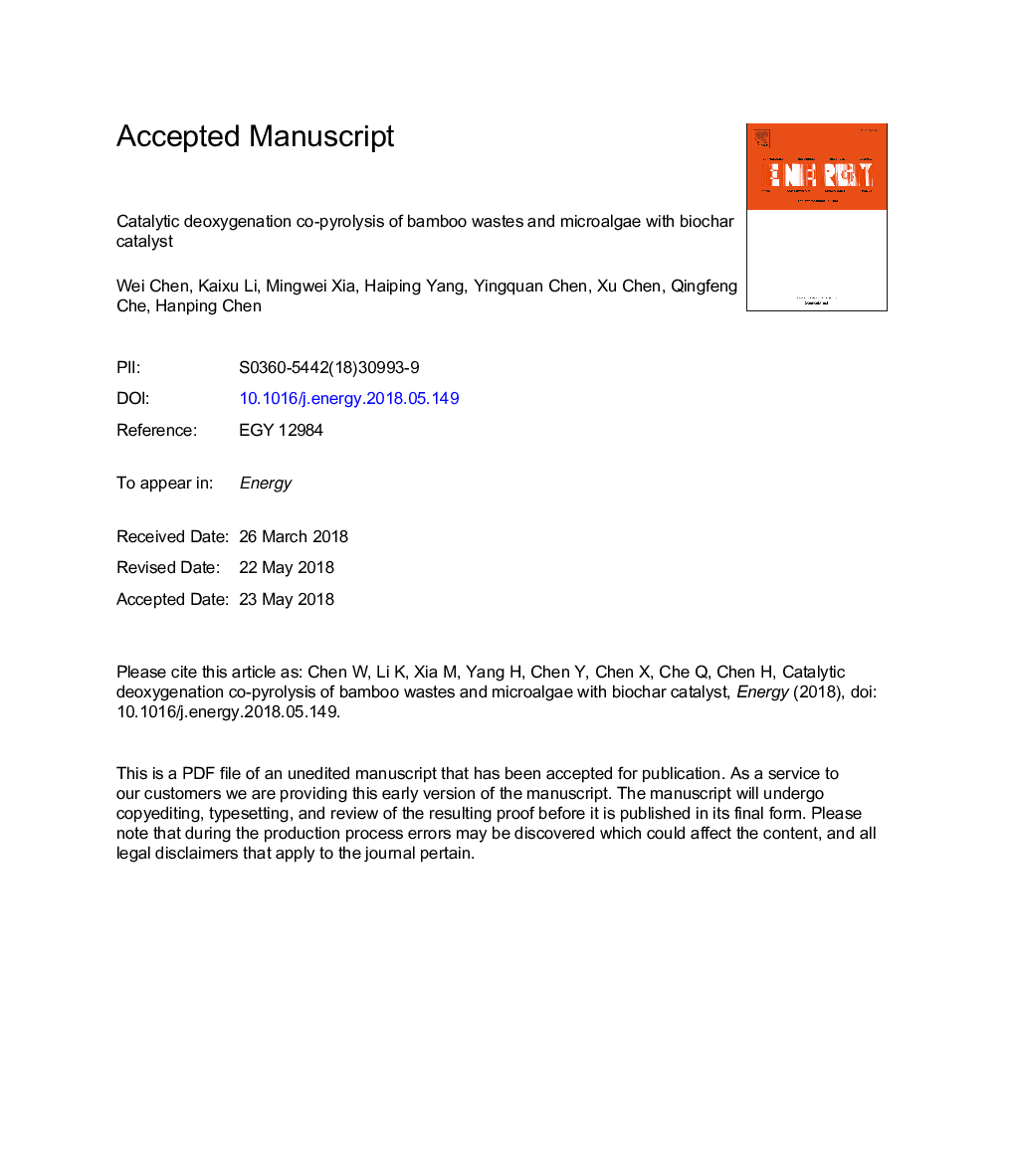| Article ID | Journal | Published Year | Pages | File Type |
|---|---|---|---|---|
| 8071250 | Energy | 2018 | 41 Pages |
Abstract
Catalytic deoxygenation co-pyrolysis of bamboo wastes and microalgae with biochar catalyst was investigated in a fixed bed reactor to explore the deoxygenation effect and possible deoxygenation mechanism of biochar catalyst (resulted from bamboo wastes pyrolysis). Results showed that oil fraction yields from co-pyrolysis of bamboo wastes and microalgae decreased largely with biochar addition, but still maintained at 35-37â¯wt.%, while gas yields were enhanced greatly. As catalytic co-pyrolysis promoted the decomposition of long-chain fatty acids and O-species, and the formation of aromatics and phenols, therefore most oxygen in bio-oil vapor transformed to CO, CO2 and H2O, and only 7-9â¯wt.% oxygen retained in oil fraction. It indicated that biochar catalytic co-pyrolysis could not only efficiently remove oxygen (over 90â¯wt.%), but also keep oil fraction yields. Moreover, the active O-containing groups and specific surface area of biochar catalyst decreased largely after catalytic co-pyrolysis. The possible reaction pathways of catalytic co-pyrolysis with biochar catalyst were proposed.
Related Topics
Physical Sciences and Engineering
Energy
Energy (General)
Authors
Wei Chen, Kaixu Li, Mingwei Xia, Haiping Yang, Yingquan Chen, Xu Chen, Qingfeng Che, Hanping Chen,
